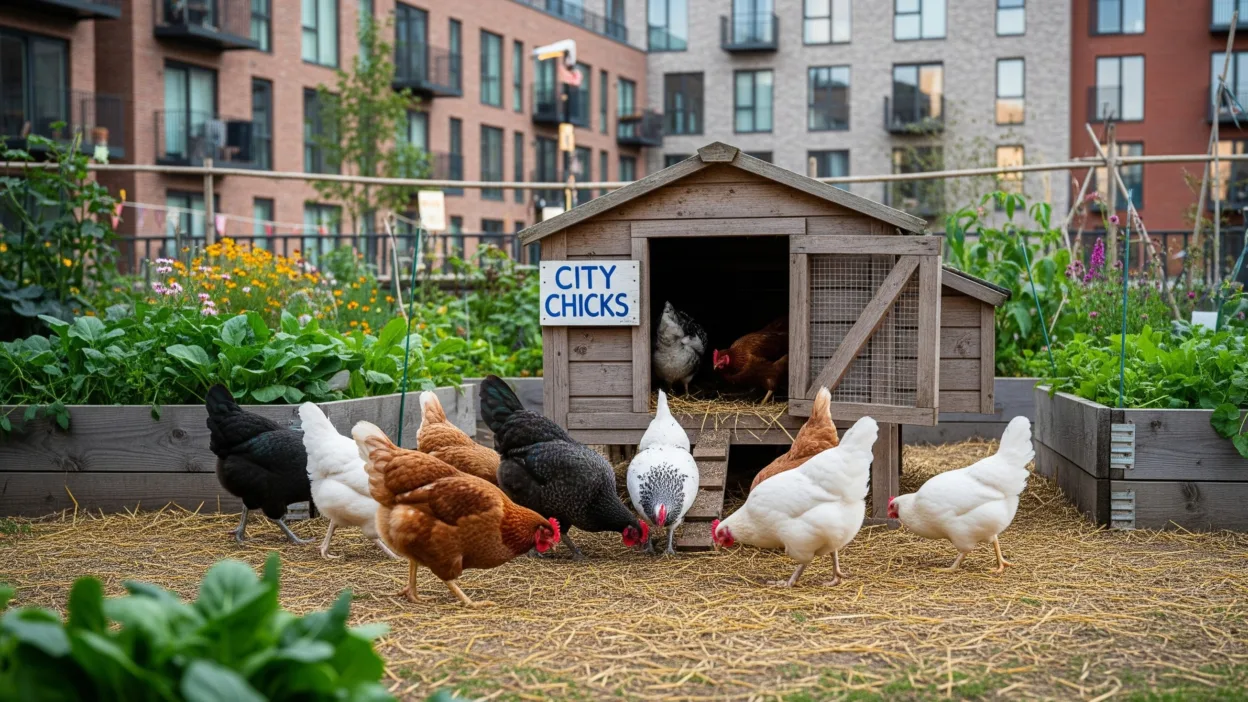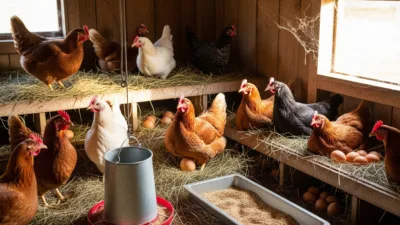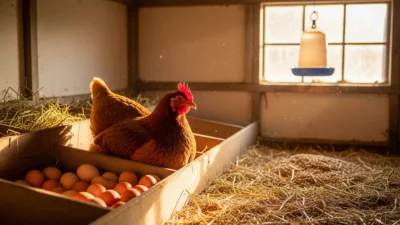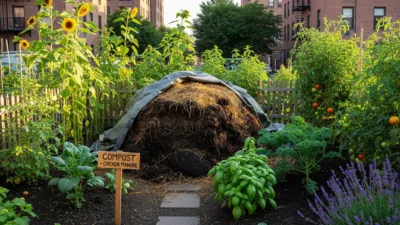Heel warts, also called bumblefoot or plantar pododermatitis, are a common condition in backyard chickens. They often appear as swollen, painful spots on the bottom of a hen’s foot, making it difficult for her to walk, perch, or scratch the ground.
The severity of heel warts can change with the seasons due to weather, ground conditions, and flock management practices. Knowing how to treat and prevent heel warts seasonally will help keep your chickens healthy year-round.
What Are Heel Warts in Chickens?
Heel warts develop when bacteria (often Staphylococcus aureus) enter small cuts or cracks on the chicken’s foot. This can lead to:
- Redness and swelling
- Lameness or limping
- A dark scab or abscess on the footpad
- Reduced activity and egg laying
Without proper treatment, heel warts can progress into serious infections.
Why Heel Warts Are Seasonal
Different seasonal conditions make chickens more vulnerable:
- Spring: Wet muddy runs create bacteria-friendly environments.
- Summer: Hard dry soil and rough ground cause small cuts on feet.
- Fall: Damp leaf litter and droppings increase infection risks.
- Winter: Frozen ground and icy perches lead to cracks and injuries.
Understanding these seasonal risks allows chicken keepers to adjust care routines.
Seasonal Heel Wart Treatment and Care
Spring Treatment and Prevention
- Keep the run dry by adding gravel, sand, or wood shavings.
- Check chicken feet weekly for early signs of swelling.
- Wash mild cases with warm water and apply antibiotic ointment.
Summer Treatment and Prevention
- Inspect for cuts caused by rough ground.
- Apply natural protectants like coconut oil or Vaseline to soften footpads.
- Keep perches smooth and avoid sharp edges.
Fall Treatment and Prevention
- Remove damp leaves and droppings daily.
- Use foot soaks (Epsom salt in warm water) if early warts appear.
- Wrap affected feet with clean gauze to prevent dirt from entering wounds.
Winter Treatment and Prevention
- Provide padded perches to avoid cracks from cold surfaces.
- Avoid wet bedding inside the coop.
- If infection worsens, consult a vet for possible surgical cleaning or antibiotics.
Step-by-Step Heel Wart Home Treatment
If you spot heel warts in any season, follow this treatment process:
- Soak the foot in warm Epsom salt water for 15–20 minutes.
- Gently clean the infected area with antiseptic.
- Apply antibiotic ointment or natural remedies like honey or turmeric paste.
- Bandage the foot with clean gauze and change daily.
- Isolate the chicken if the infection is severe, to reduce stress and contamination.
For advanced infections, always seek veterinary advice.
Natural Remedies for Heel Warts in Chickens
- Raw honey: Natural antibacterial properties.
- Turmeric paste: Anti-inflammatory benefits.
- Apple cider vinegar foot soaks: Reduces bacteria and promotes healing.
- Essential oils (tea tree, oregano): Use sparingly and always diluted.
FAQs About Heel Wart Treatment
Q1: Can heel warts kill a chicken?
Yes, untreated infections can spread and become life-threatening.
Q2: Are heel warts contagious?
Not directly, but bacteria in wet bedding or dirty runs can infect multiple birds.
Q3: What is the fastest way to heal heel warts?
Early treatment with cleaning, antibiotic ointment, and bandaging helps most cases heal within 1–2 weeks.
Q4: How can I prevent heel warts long-term?
Maintain clean bedding, dry runs, smooth perches, and regular foot checks.
Final Thoughts
Seasonal changes affect how and why heel warts in chickens develop. By adjusting flock care with the seasons, you can prevent painful infections and keep your hens active and productive all year long. Early treatment with cleaning, ointments, and proper bandaging is key, while prevention through good coop management ensures healthier feet for your flock.



